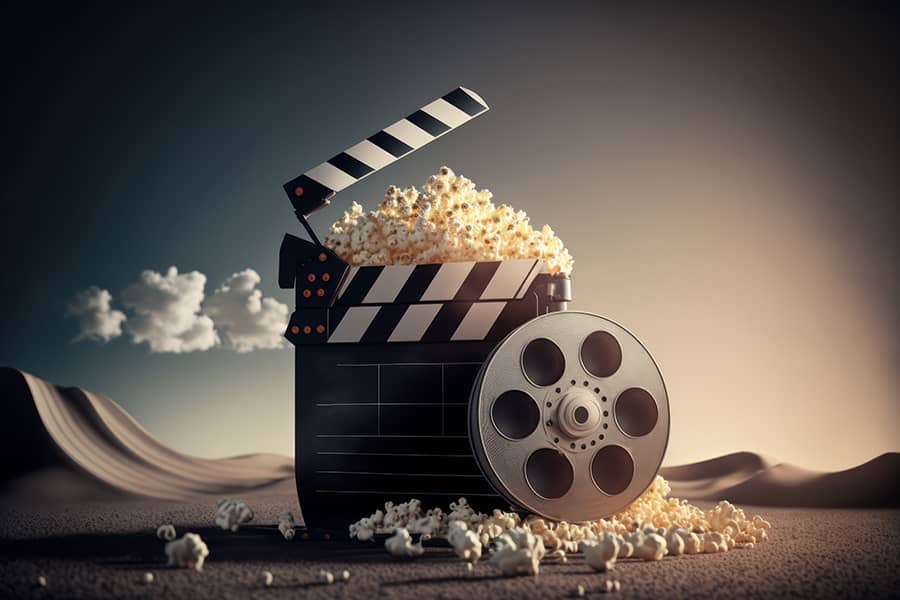The Evolution of Superhero Movies: From Campy to Blockbusters

Introduction: The Rise of Superhero Cinema
Superhero cinema has transformed from a niche genre into a dominating force in global entertainment, capturing the imaginations of audiences across generations. This evolution can be traced back to the release of Richard Donner’s “Superman” in 1978, which set the standard for a more serious and respectful approach to comic book adaptations. However, it wasn’t until the turn of the millennium with films like “Spider-Man” (2002) and Christopher Nolan’s “Batman Begins” (2005) that we witnessed an unprecedented rise in both box office numbers and critical acclaim, solidifying superheroes as cultural icons.
The genre’s ascendancy isn’t solely about flashy visuals and heroic escapades; rather, it reflects deeper societal narratives and evolving moral codes. Superheroes began embodying complex themes such as resilience against adversity, identity struggles, and ethical dilemmas – serving as modern-day myths that resonate with audiences navigating their own challenges. Moreover, franchises like the Marvel Cinematic Universe have introduced interconnected storytelling that keeps fans engaged over years—blending character arcs across multiple films while creating a sense of community among viewers who eagerly analyze each twist and turn. This intricate world-building invites not just popcorn consumption but active participation in exploring what heroism means in contemporary society.
Early Beginnings: Comic Strips to Screen
The journey from comic strips to the big screen represents a fascinating evolution, illustrating how simple illustrations morphed into complex narratives that captivated audiences worldwide. Early superhero comics emerged in the 1930s, characterized by zany plots and exaggerated characters, often reflecting societal issues of their time. Titles like Action Comics introduced iconic figures such as Superman, who embodied hope amidst the Great Depression, inviting readers not just to escape reality but to envision a better world.
As comic strips transitioned onto television screens in the 1960s, they embraced an exuberant campiness epitomized by shows like “Batman,” which infused humor and vibrant visuals into stories once confined to ink and paper. This period showcased a unique blend of innocence and irreverence, creating cultural phenomena that transcended generations. However, it wasn’t until the late 20th century that filmmakers began to view these beloved characters through a more serious lens, recognizing their potential for deep storytelling and emotional resonance—a shift that laid the groundwork for today’s multifaceted cinematic universes.
This transformation has redefined both superhero narratives and audience expectations; what began as entertaining depictions of good versus evil now explores themes of identity, morality, and consequence. As we reflect on this evolution from comic panels to celluloid frames, it’s clear that superheroes are no longer mere caricatures—they’ve become mirrors reflecting our society’s hopes and fears while challenging us to reconsider what it truly means to be heroic.
The Campy Era: 1960s Television Shows
The 1960s marked a vibrant and irreverent chapter in television history, where the superhero genre was defined not by grit and realism but by an exuberant embrace of camp. Shows like Batman, with its iconic Adam West portrayal, leaned heavily into humor, reflecting the cultural zeitgeist of an era that valued lighthearted escapism during turbulent times. The bright colors, over-the-top villains, and playful catchphrases exemplified a whimsical take on morality tales, inviting audiences to revel in absurdity rather than expect gravitas.
This campy approach wasn’t merely entertainment; it satirized contemporary issues while connecting with viewers in surprisingly profound ways. By presenting heroes as charismatic yet profoundly flawed figures—like the bumbling Batman constantly juxtaposed against his cunning foes—these shows explored complex human themes such as identity and societal expectations. This innovation laid the groundwork for future interpretations of superheroes, subtly reminding us that beneath their spandex and superpowers lies vulnerability and relatability. As we move toward modern dark-and-serious narratives in superhero films today, there’s a nostalgic charm to remember that sometimes saving the world can come laced with laughter—and sometimes even a dance number!
Darker Themes: The 1980s and Beyond
The 1980s marked a pivotal shift in the portrayal of superheroes, moving away from the campy aesthetics of earlier decades toward narratives that delved into darker, more complex themes. This era introduced us to films like Superman II and “Batman,” where moral ambiguity took center stage. The characters were no longer merely paragons of virtue; they grappled with intense personal conflicts and existential dilemmas, reflecting societal anxieties about authority and identity. With this shift came a newfound emphasis on realism, which resonated deeply with audiences eager for stories that transcended traditional good-versus-evil paradigms.
As we strode into the 1990s and beyond, filmmakers increasingly capitalized on this trend toward grit, manifesting in adaptations such as Blade and The Crow. These films embraced darker tones and mature content, inviting viewers into worlds fraught with violence, loss, and redemption. Consequently, characters became imbued with shades of gray—Antiheroes emerged as relatable figures battling their own demons rather than just external foes. This evolution not only mirrored changing cultural attitudes but also set the stage for future blockbuster hits like Christopher Nolan’s “The Dark Knight,” which transformed superhero storytelling into a profound exploration of duality within human nature itself. In doing so, it laid bare our contemporary struggles while still anchoring us to age-old myths reimagined for modern sensibilities.
The Birth of Blockbusters: 2000s Marvel
The 2000s marked a transformative era in superhero cinema, where Marvel began to master the delicate balance between grounded storytelling and larger-than-life characters. The release of X-Men in 2000 shattered preconceived notions about comic book adaptations, paving the way for more complex narratives that did justice to their source material. Unlike its predecessors, which often relied on camp and caricature, this film dared to explore themes of identity and societal prejudice through the lens of mutants grappling with their powers—a commentary as relevant today as it was then.
Following closely behind was Spider-Man (2002), a cultural phenomenon that resonated with audiences on both emotional and existential levels. Sam Raimi’s approach infused humor into Peter Parker’s struggles while maintaining an earnestness that allowed viewers to invest deeply in his journey from nerdy teenager to heroic savior. This tonal shift diversified the palette of superhero films, demonstrating that action could coexist with heart-felt storytelling. With each installment—from Iron Man onward—the cinematic universe expanded not just geographically but thematically, intertwining multiple storylines while also humanizing its heroes amid epic battles against formidable foes.
The Marvel Cinematic Universe (MCU) officially launched with Iron Man in 2008, solidifying the idea of interconnected narratives within a franchise—an innovation that revolutionized filmmaking itself. What began as solo outings grew into an ensemble phenomenon where charisma mingled effortlessly with thrilling action sequences. Audiences found themselves invested not only in individual characters but also in the broader narrative tapestry woven across films—each new chapter revealing fresh depths and connections among beloved heroes. This era empowered both filmmakers and fans alike, inviting profound discussions about morality, sacrifice, and what it truly means to be a hero—setting an incredibly high bar for future generations of superhero storytelling.
Expanding Universes: DC vs. Marvel Showdown
As superhero films transitioned from campy charm to cinematic juggernauts, the universes crafted by DC and Marvel expanded in ways that dominated pop culture. Marvel’s approach, epitomized by the interconnected universe of the MCU, capitalizes on intricate storylines that traverse films and series, allowing characters’ arcs to evolve over time. This strategy fosters a sense of shared experience among audiences; fans eagerly anticipate which hero will cross paths next or how plot threads from earlier phases will weave into new narratives. Such meticulous planning deepens engagement and creates an expansive tapestry that invites multiple viewings as viewers uncover hidden connections.
Conversely, DC has leaned into standalone narratives while attempting to forge its own interconnected path with projects like The Suicide Squad and Zack Snyder’s Justice League. While this approach provides flexibility for creative experimentation, it also divides audience perception due to varying tones across films—ranging from the dark aesthetics of Batman v Superman to the vibrant whimsy of Shazam! This inconsistency can challenge fan loyalty but also opens doors for diverse storytelling styles within their cinematic landscape. The future sees both giants facing off not just at the box office but within ever-expanding universes, each vying for fan allegiance amid discussions about representation, inclusivity, and innovation in storytelling. In this battle of creativity versus continuity, we’re left wondering: where will each universe take us next?
Impact of Technology on Filmmaking
The impact of technology on filmmaking has transformed the superhero genre from its campy origins to the blockbuster spectacles we see today. Advanced CGI and motion capture have revolutionized how filmmakers portray beloved characters and explosive action sequences, allowing for visuals that once existed only in the realm of imagination. This technological evolution means that filmmakers can now create expansive universes teeming with intricate details, compelling audiences to immerse themselves fully in these fantastical worlds.
Moreover, technology has democratized filmmaking itself, enabling independent creators to tell their own superhero stories without the significant financial backing traditionally required. Affordable equipment and editing software have paved the way for innovative narratives that challenge mainstream perspectives—providing fresh takes on classic archetypes or even subverting them entirely. The rise of streaming platforms further amplifies this effect; they not only champion diverse storytelling but also allow audiences access to a wide range of superhero content from around the globe, redefining what it means to be a hero in today’s society.
Diverse Storytelling: Representation in Recent Films
In recent years, superhero films have shifted towards a richer tapestry of narratives that embrace diverse storytelling, reflecting a broader spectrum of identities and experiences. This evolution is not merely about including characters from various backgrounds; it’s about weaving their distinct cultural narratives into the fabric of the superhero genre itself. Films like Black Panther and Shang-Chi and the Legend of the Ten Rings have elevated representation beyond token acknowledgment, crafting intricate worlds that celebrate their cultural roots while delivering high-stakes adventure.
Moreover, this surge in diverse storytelling introduces a new level of relatability for audiences who may have rarely seen themselves reflected in this traditionally Western-dominated genre. Characters are no longer simply heroic archetypes; they come with rich histories, personal struggles, and authentic community ties that resonate deeply with viewers. The success of these films illustrates that when creators authentically represent varied voices—whether through casting or narrative focus—it not only enriches the story but revitalizes interest in superhero lore itself. Indeed, as filmgoers crave stories that echo their own realities while still reaching for fantastical escapism, we find ourselves at a poignant intersection where diversity becomes an essential ingredient for engagement in Hollywood’s evolving blockbuster landscape.
Cultural Phenomenon: Superheroes in Pop Culture
Superheroes have transcended their comic book origins to become a defining cultural phenomenon and a mirror reflecting society’s values, fears, and aspirations. At their core, these larger-than-life characters embody the ideals of heroism and justice, but they also serve as versatile symbols through which audiences can explore complex social issues. For instance, figures like Black Panther and Wonder Woman challenge traditional narratives around race and gender, offering diverse perspectives that resonate with contemporary audiences. These heroes not only entertain but provoke dialogue about identity and empowerment in an increasingly divided world.
Moreover, the surge of superhero films has transformed cinema into a shared experience where fans gather to celebrate collective camaraderie at theaters or online discussions. This phenomenon extends beyond mere entertainment; it fosters community building among fans who cling to the rich lore and mythology surrounding their favorite characters. With each new film installment or streaming series introduction, viewers embark on an emotional journey not just inside the theater but within their own lives as they draw connections between personal struggles and the archetypal battles of good versus evil found in superhero narratives.
As we look toward the future of this genre, it’s evident that superheroes will continue to evolve in tandem with societal progress. Emerging themes such as mental health awareness—exemplified by characters like Spider-Man grappling with anxiety—highlight a crucial shift towards relatability over invincibility. In doing so, these stories invite deeper engagement from all walks of life while maintaining their exhilarating escapism—a duality that ensures superheroes remain relevant for generations to come.
Conclusion: Future of Superhero Movies Ahead
As the superhero genre continues to evolve, we stand on the brink of an exciting new era characterized by both innovation and introspection. Filmmakers are increasingly experimenting with narrative structures and character arcs, shifting from conventional savior tropes to exploring complex moral dilemmas and the psychological depths of these iconic figures. This evolution reflects society’s changing values and expectations, pushing creators to delve deeper into themes of identity, redemption, and societal responsibility—elements that resonate strongly in today’s cultural climate.
Moreover, with the rise of streaming services and global co-productions, superhero stories are becoming more diverse than ever before. Audiences can now expect narratives that represent a wider array of backgrounds and experiences. This inclusivity not only broadens the appeal but also enriches storytelling potential within this expansive universe. As we look ahead, it’s clear that the future of superhero movies will be defined by their ability to adapt to audience desires while remaining relevant in an ever-changing world—all while continuing to entertain us with fantastical exploits that challenge our perception of heroism itself.
Recent Posts
-
The Top Destinations to Visit in October, Based on Expert Recommendations
September 25, 2024 -
The Essential Lifestyle: Ways to Streamline and Organize Your Life
September 22, 2024 -
How to Journey on a Budget: Tips for Cost-Effective Adventures
September 21, 2024 -
The Growing Importance of Mental Health for Athletes
September 20, 2024




